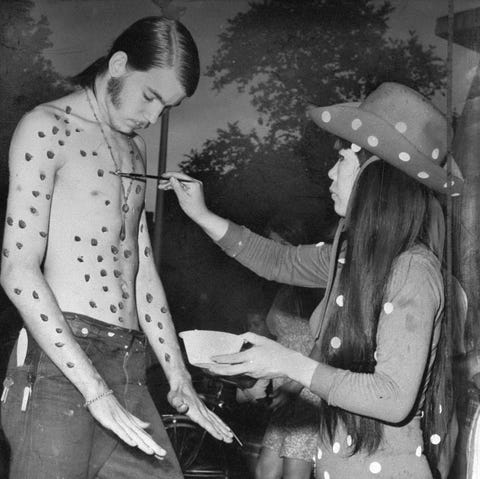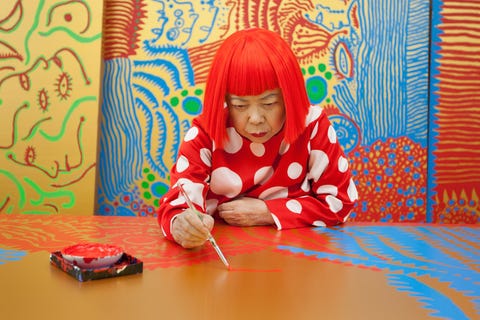
The first event to kick-off Kusama's 2019/2020 tour will be a new Infinity Room on November 9th presented at the David Zwirner gallery. The gallery anticipates almost 100,000 visitors over the course of the show’s run, with wait times averaging two hours. Following the exhibit's debut, Kusama will display a balloon at the Macy’s day parade titled “Love Flies up to the Sky." An average of 50 million people will tune in to the nationally televised parade. As if that’s not enough, the New York Botanical Garden—250-acre museum of plants that lies just 20 minutes from midtown Manhattan—announced KUSAMA: Cosmic Nature, which will feature a “a rare opportunity to view works, including immersive experiences, that encompass Kusama’s entire career”.

This level of national and global recognition is well-deserved for Kusama, but her success hasn't come easy. A thoughtful documentary recently available for streaming sheds light on the artist’s tumultuous career, beginning with her move to New York City from Japan in the 1960’s at the suggestion of her mentor, Georgia O’ Keefe. In the predominantly white, all-male art scene at the time, she endured countless instances of sexism and racism. Though Claes Oldenburg and Andy Warhol were considered Kusama’s friends and contemporaries, she later (rightly) accused them of stealing her work and taking credit for it. Still, Kusama persevered, proceeding to influence major movements in art history. But these continued slights by her peers sent her into a spiral of poverty and depression, and ultimately precipitated her move back to Tokyo.

Despite her feelings of isolation and marginalization, there is a democratic quality to her work that gives it instant mass appeal. The idea that you can spread happiness through a red polka-dot, or that a hall of mirrors can transport you to infinity—is something that can be understood by every culture, city and most recently, through an iPhone screen. That she's been able to take her work to mass-market while living a life of reclusivity (she voluntarily admitted herself into a Tokyo mental institution in 1977, where she currently resides) is a fascinating testament to the universal power of her art.

At the age of 90, Kusama is at the height of her fame, yet her style has stayed relatively consistent since her early art making days, “frequently deploying repetitive elements—such as dots—to evoke both microscopic and macroscopic universes," according to a press release from David Zwirner. Yes, her artwork makes for great photo opportunities. But her rise to celebrity-status in the last 5-10 years has as much to do with aesthetics as it does the current generational desire to participate in alternative narratives—narratives like their own—and see themselves reflected back.

No comments:
Post a Comment